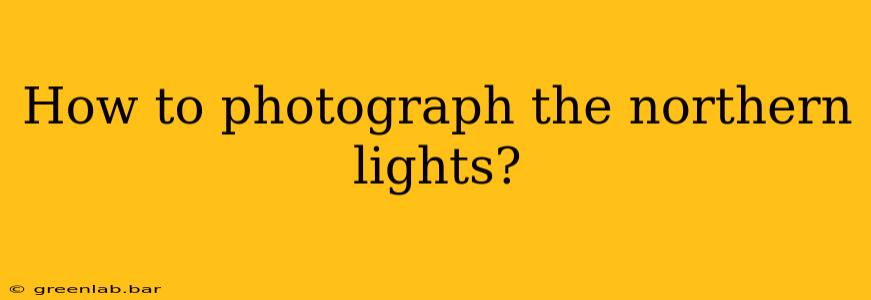Chasing the aurora borealis, or Northern Lights, is a bucket-list experience for many. But capturing their ethereal beauty in a photograph? That's a challenge requiring planning, patience, and the right techniques. This guide will equip you with the knowledge and skills to photograph the aurora, turning those fleeting moments of magical light into stunning keepsakes.
Essential Gear for Aurora Photography
Before you even think about chasing the lights, ensure you have the right equipment. Investing in quality gear significantly impacts your results.
1. Camera Body:
- Full-frame DSLR or Mirrorless: These offer superior low-light performance and dynamic range, crucial for capturing the aurora's subtle details and colors. APS-C cameras can work, but you'll likely need longer exposures.
2. Lens:
- Wide-angle lens: A wide-angle lens (14-24mm or similar) is essential for capturing the vastness of the aurora across the night sky. A faster aperture (f/2.8 or faster) is highly beneficial for gathering more light.
3. Tripod:
- Sturdy tripod: A rock-solid tripod is absolutely non-negotiable. Long exposures are key to aurora photography, and even the slightest movement will result in blurry images. Consider a tripod with a hook to add weight for extra stability.
4. Remote Shutter Release:
- Cable or wireless remote: This prevents camera shake caused by pressing the shutter button manually, especially important during long exposures.
Mastering the Settings: Techniques for Stunning Aurora Photos
Getting the right settings is crucial for capturing the aurora's brilliance. Here's a breakdown:
1. Shooting Mode:
- Manual (M): This gives you complete control over aperture, shutter speed, and ISO. This is essential for aurora photography.
2. Aperture:
- Wide open: Set your aperture as wide as possible (e.g., f/2.8). This maximizes the amount of light entering the lens.
3. Shutter Speed:
- Experimentation is key: Start with a shutter speed of around 10-20 seconds. This depends on the intensity of the aurora. If the aurora is faint, you'll need a longer exposure. Too long, and you might get star trails.
4. ISO:
- Balance is crucial: Start with a relatively high ISO (e.g., 800-3200), but be mindful of noise. Higher ISO values will introduce more grain into your images. Find the sweet spot between sufficient light and acceptable noise levels.
5. Focusing:
- Manual focus: Set your lens to manual focus and focus on infinity. You can fine-tune this slightly depending on the aurora's distance.
Location, Timing, and Post-Processing: The Final Touches
Even with the right gear and settings, the success of your aurora photography depends on several other factors.
1. Location:
- Light pollution: Escape light pollution! Find a location far from city lights for the darkest possible sky. Websites and apps can help you find dark sky locations.
2. Timing:
-
Aurora forecasts: Utilize aurora forecast websites and apps to predict the aurora's strength and visibility. These forecasts indicate the KP index, a measure of geomagnetic activity. Higher KP values generally mean stronger auroras.
-
New Moon: Photographing during a new moon or close to it minimizes light interference, allowing the aurora to shine.
3. Post-Processing:
- Enhance your images: Post-processing is crucial for bringing out the details and colors of your aurora photos. Software like Adobe Lightroom or Photoshop allows you to adjust brightness, contrast, saturation, and reduce noise.
Beyond the Basics: Tips for Exceptional Aurora Photos
- Compose your shots carefully: Consider the composition of your images. Include interesting foreground elements like trees, mountains, or water to add depth and context.
- Shoot in RAW: Shooting in RAW format provides more flexibility during post-processing, allowing you to recover details and adjust settings without losing quality.
- Patience is a virtue: The aurora is a dynamic phenomenon. Be patient and persistent, and don't be discouraged if your first few attempts aren't perfect.
- Learn from others: Explore online resources and communities dedicated to aurora photography. Learning from experienced photographers is invaluable.
By following these guidelines and dedicating yourself to learning and practicing, you’ll be well on your way to capturing breathtaking images of the Northern Lights. Remember, the key is preparation, perseverance, and a healthy dose of patience!

